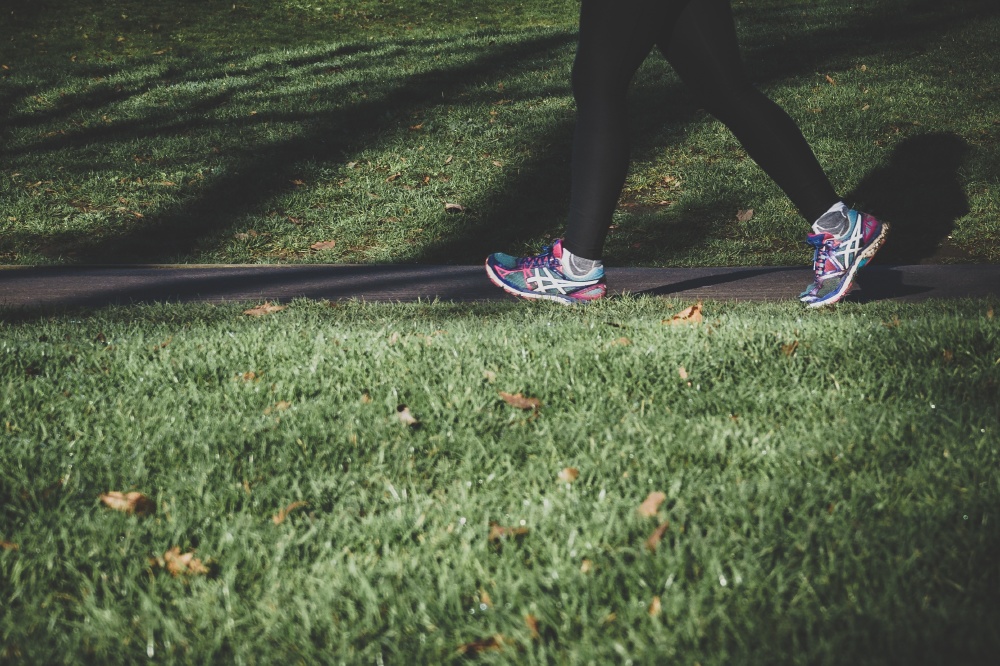Some of the reported differences between the groups may reflect the greater proportion of people who are retired or in part-time employment.

Attitude
Frequency - twice as many over-50s exercise every day compared to under-30s. This is a worrying trend as many studies now show that a life-long habit of physical activity reduces the risk of preventable mortality from cardiovascular disease, type-II diabetes and obesity.
Time of day - over-50s tend to exercise between 9-5 whereas under-30s typically exercise after 6pm. Again this is a reflection of available time but one advantage might be gained from exercising outside during daylight hours, ‘Green Exercise’. Unless you are trying to be an elite athlete the time of day is less important than actually doing it!
Sitting - 18% of under-30s admit to sitting all day versus just 9% of over-50s. This is interesting as it suggests that if the over-50s have more available time they are not spending it in sedentary behaviours. For the under-30s this is extremely worrying as ‘Sitting Disease’ is one of the modifiable risk factors for the diseases mentioned above, in addition to increasing the risk of cancer. JustStand.org is an excellent resource for how to reduce your sitting time.
Healthy lifestyle - over-50s see exercise as part of a healthy lifestyle while under-30s exercise for specific goals such as losing weight or de-stressing. While goal-driven exercise is often a good motivator to get active, when we achieve the goal we may reduce our efforts, whereas adopting a healthy lifestyle approach appears to lead to more sustained change.
Benefits - More than twice the number of over-50s compared with the younger group report feeling the benefits of an active lifestyle in terms of wellbeing and increased energy. Again, these long-term changes lead to us being more likely to continue being active, as opposed to short-term goals.
Type of exercise - under-30s prefer to exercise in gyms, preferably with a partner. The older group prefer to exercise outdoors and don’t necessarily rely on company. This is an interesting finding as there is now evidence suggesting that exercising with others or in groups, for example team sports, helps with our emotional health and social wellbeing. We only need to see the enormous popularity of dancing to recognise this.
Type of exercise II - under-30s prefer running, yoga/Pilates or swimming while over-50s prefer swimming and cycling. This may represent a focus on reducing load on lower limb joints as we age, but in both groups some form of strength exercise should be encouraged to maintain bone health and muscle strength, especially important in females.
Sustainability - over-50s adopt forms of activity that are generally less expensive than the younger group; it costs nothing to get outdoors and start moving, whereas gyms can be expensive if we use them daily.
Attitude - seeing exercise and activity as part of our life, rather than something we need to do to achieve goals or avoid obesity tends to lead to a longer-lasting incorporation of physical activity into our life. Research now shows that a life-long history of physical activity leads to reduction in the risk of developing preventable disease - see for example exerciseismedicine.org
Maybe our elders know best!

Written by Cris Kellett, Physiotherapy Manager of Progress, The Cambridge Centre for Health and Performance, part of Spire Cambridge Lea Hospital
Progress - The Cambridge Centre for Health and Performance, www.progresshealth.co.uk
T: 01223 200580, E: [email protected] or @Progress_uk
Derived from the Portafina ‘Keeping Active’ survey.
Tagged in exercise

